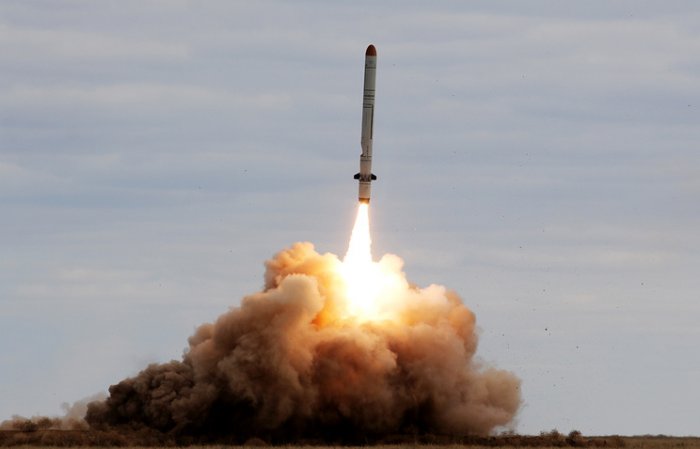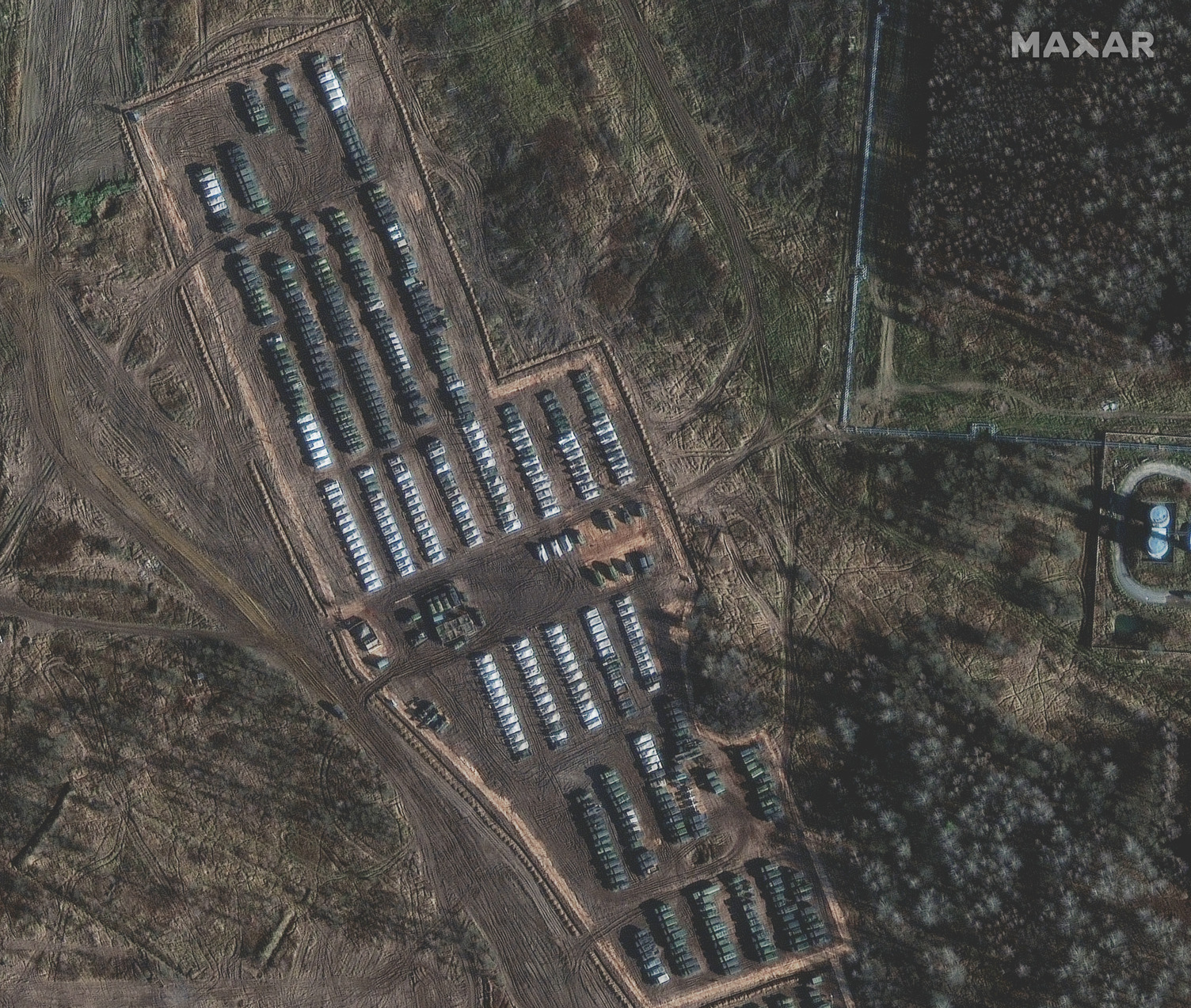At the end of October, Konstantin Vorontsov, Deputy Director of the Department for Non-Proliferation and Arms Control of the Russian Foreign Ministry, told the UN General Assembly that if US commercial satellites help Ukraine, they can become "legitimate targets for a Russian strike." After that, experts started talking both about the incompatibility of forces in space, and about the fact that such a strike could cause massive space pollution, which would also hit Russia itself. NATO officials traditionally did not talk aloud about specific responses to a possible strike, but referred to the speech of the head of the alliance, Jens Stoltenberg, in Brussels, who, referring to all types of threats from Russia, said : “The scale of the response will depend on the nature of the attack. And we will not give our potential adversaries the privilege of determining where the boundary lies for the application of the Fifth Paragraph.
Former NATO Assistant Secretary General Jamie Shea was more outspoken: "Any Russian attack against satellites used by NATO members in space will be seen as an act of aggression that will lead to the implementation of paragraph 5. Other NATO allies may call for this as well."
Technical capabilities to attack
The technical task of destroying a satellite in near-Earth orbit was set from the very beginning of the space age by both the Americans and the Soviet Union. The first projects, due to the low accuracy of guidance, even required the use of a nuclear charge, but the next generations of devices made it possible to do without such drastic measures.
There are two methods for physically destroying a spacecraft: another spacecraft and a rocket from Earth. A spacecraft capable of hitting another one is a complex device that is launched in advance and, as necessary, is brought to the target that arose during the military confrontation. A rocket launched from the Earth is simpler, it does not have to gain orbital speed, but it is enough to enter a trajectory that intersects with the satellite, and then release a swarm of fragments, about which the target will break itself due to its own high speed. But the existing missiles are also limited in use: they can only hit objects in orbits up to 800 km, and only those satellites that fly in the area reachable from the launch pad.
Existing missiles are limited in use, they are only capable of hitting objects in orbits up to 800 km
The USSR was developing an orbital "Satellite Fighter" , but now it is unlikely that it will be possible to sneak up on the enemy unnoticed. The Russian cosmonautics has the technical capability, and tests of inspector satellites have already been carried out. And where inspection is possible, damage is easy there. Today, Russia has an anti-satellite weapon of the second type – the A-235 (Nudol) system . Its main task is missile defense, but in exceptional cases it is also suitable for destroying near-Earth satellites.

As an anti-satellite weapon, Nudol was tested a year ago on November 15, 2021. The old Soviet satellite Kosmos-1408 was successfully hit at an altitude of about 470 km. Although I don’t want to apply the word “successful” to such an experiment, since the impact led to the formation of one and a half thousand debris in orbit, and the crew of the International Space Station, which flies at an altitude of 410 km, had to hide twice in spaceships in case the station was hit by satellite debris.
Thus, from a technical point of view, the Russians' threats to shoot down satellites are not unfounded. However, as a rule, this does not take into account the quantitative problem. The Ukrainian armed forces use the Starlink Internet satellite network (about 2,800 active devices), in addition, they have access to data from Iceye radar sounding satellites (21 devices in orbit). Maxar satellites (4 pieces) are actively surveying the regions of Ukraine in the interests of the US military, some of their images may also be available to Ukrainians. The quality of their shooting is such that in the pictures you can see separately standing people. Judging by the published press releases , the company is actively filming the war zone. All companies are de jure commercial, so Russia could make claims against any of them in the spirit of Vorontsov's statement, although they all interact with the US government in one way or another.
From a technical point of view, the Russians' threats to shoot down satellites are not unfounded.
In August, the “Sergey Prytula Charitable Foundation” announced the acquisition of one of the satellites of the Finnish company Iceye and the access of the Armed Forces of Ukraine to the archival data of this company. <Apparently, this is not about the satellite itself, but about the data received from it – The Insider>. Iceye is a private company based in Finland, but has been supplying data to the Pentagon since 2021 through a US subsidiary. Iceye has developed and operates Earth radar satellites. Now there are 21 in orbit (one of them is on permanent lease from Ukraine). These satellites make it possible to observe the surface of our planet with a detail of up to 25 cm, and they are not disturbed by clouds and night time.
It is likely that the Pentagon uses and shares with the APU images of Planet satellites (about 179 nano-class and 20 micro-class devices). This American space company manages three families of satellites. Five can shoot with a resolution of 5 meters in several spectral ranges, 179 ultra-small devices also shoot with a resolution of 3-5 meters, but in a day they are able to get a composite image of the entire earth's land, and another 20 satellites shoot with high detail up to 1 meter. Such a gigantic fleet of satellites allows for regular monitoring of selected areas of the Earth.

The few Maxar satellites would be a priority target, as they are the most expensive and provide the most detailed images. Russia is not in a position to encroach on the "mega-constellations" of small and ultra-small satellites, of which there will be more than 3,000 pieces in total – there will not be enough missiles.
Will Kessler Syndrome Work?
In the context of space warfare, the hypothetical scenario of a total clogging of low orbit called "Kessler's syndrome" is often recalled. In art form, it is shown in the film Gravity. The " Kessler Syndrome " involves a "chain reaction of destruction", where a cloud of debris from one satellite destroys more and more devices, and in the end, near-Earth space becomes completely littered with inoperable fragments of space debris. Among the Russian people, this idea lives on in the urban legend about the “carriage of nuts or balls from a bearing in orbit,” which the USSR allegedly launched to frighten space enemies.
Fortunately, the current situation in Earth orbit is far from cinematic and it is not suitable for implementing a “chain reaction”, primarily because space is large, satellites and space debris are small, and different devices have different operating heights. For example, Planet satellites have an orbital altitude of 400–450 km, Starlink has 550 km, and Maxar has 750 km. Moreover, many satellites, such as Starlink, have propulsion systems that are able to raise their orbit to get out of a potentially dangerous area filled with fragments.
Another factor is the ability to make up for losses. Thus, the Starlink network is replenished almost every two weeks by more than 50 devices, that is, production is established at a rate of about two satellites per day. Manufacturers of "Nudoli" will not cope with such intensity.
Finally, there are also the legal and political factors of the "space war".
When the foundations of international space law were created, they did not include the concept of "private" or "commercial" spacecraft. Jurisdiction, ownership and responsibility for any spacecraft launched is reserved to States. Therefore, an attack against any satellite, even Elon Musk, even any other American company, will automatically mean an attack on the United States. This is practically casus belli, or at least the basis for a tough foreign policy aggravation between Russia and the United States. Having promised to shoot down US satellites, Russian diplomats from the UN rostrum threatened America with war. The same applies to attempts to "indirect" damage to satellites or interfere with their work using high-power radio pulses or "blinding" lasers.
An attack against any satellite will automatically mean an attack on the US
Probably, a downed American satellite will not lead directly to the Third World War, but the incident itself will definitely affect domestic political events in the United States itself. Today, not all Americans approve of military support for Ukraine, believing that the conflict does not directly affect US interests. If American property in space is hit, then there will be no doubts.
However, it is unlikely that the United States will shoot down any Russian satellite, because its fragments will primarily threaten American satellites, simply because there are more of them than the rest combined. Most likely, this will lead to new deliveries of weapons for the Ukrainian army, possibly more long-range and modern than has been supplied so far.
From the side of NATO the answer is also possible . NATO doctrine states that retaliation will in any case be "proportional" to the act of aggression. But it is unlikely that Russian satellites will be shot down in response, including because of the danger of space debris (although not “total”), so the North Atlantic Alliance will have to look for some other measures.
We should not forget about other participants in space activities who are not involved in the conflict. Hundreds of satellites from China and dozens from India fly in low Earth orbit. Russia considers these countries friendly, but the debris of American satellites shot down by Russian missiles will create problems in orbit for everyone. Damaged Chinese and Indian satellites will obviously not add friendliness towards current partners to Russia.
We can no longer talk about our own Russian space grouping. It clearly does not make a big contribution to the victories of Russian weapons today. Russian satellite-building enterprises fell under harsh sanctions, which have repeatedly angered the former head of Roscosmos, Dmitry Rogozin. Although he tried to brag about the independence of the Russian cosmonautics from sanctions, in rare moments of sincerity he did not hide the difficulties. Probably, this factor also contributes to the bitterness of Russian politicians.


